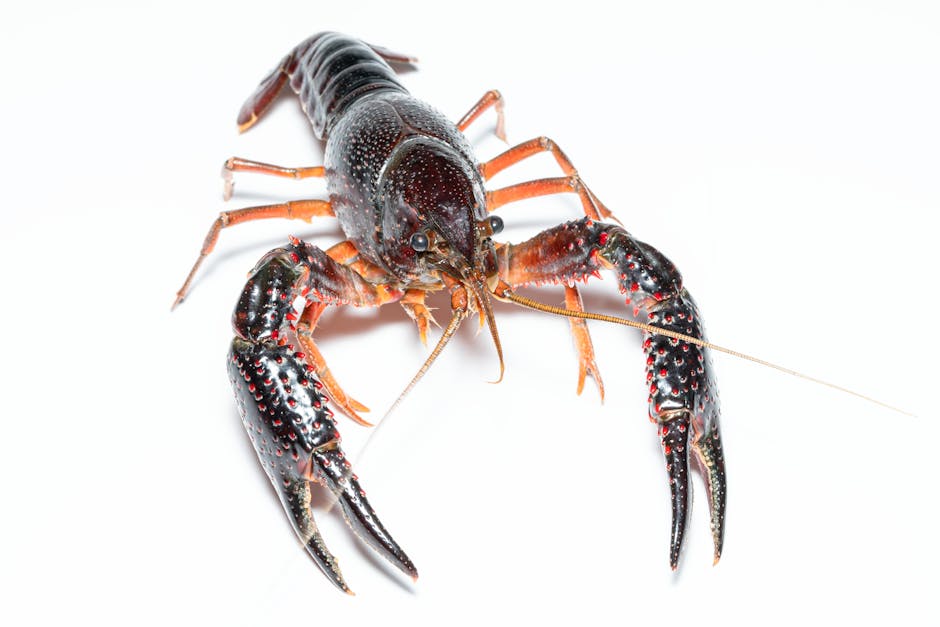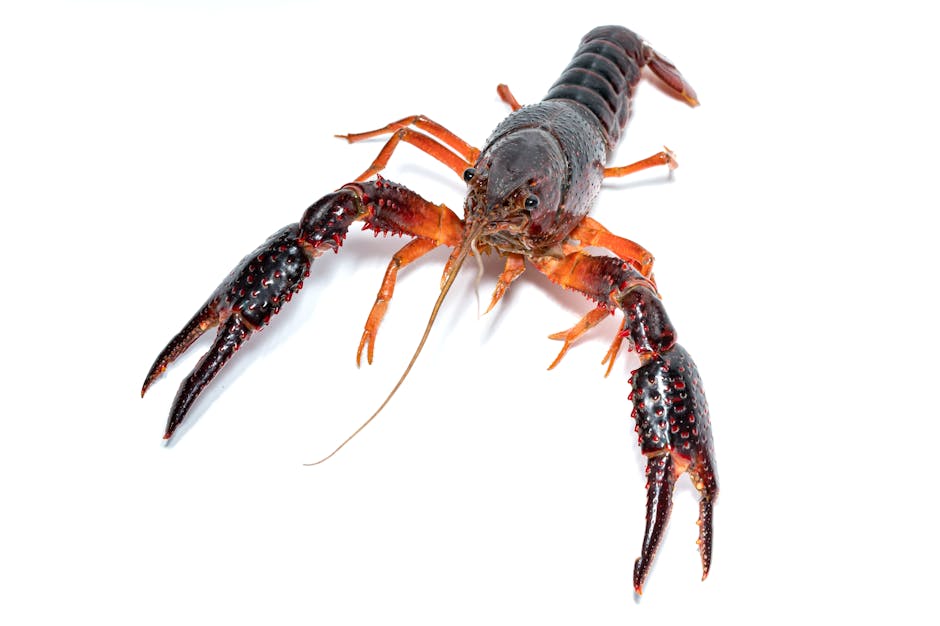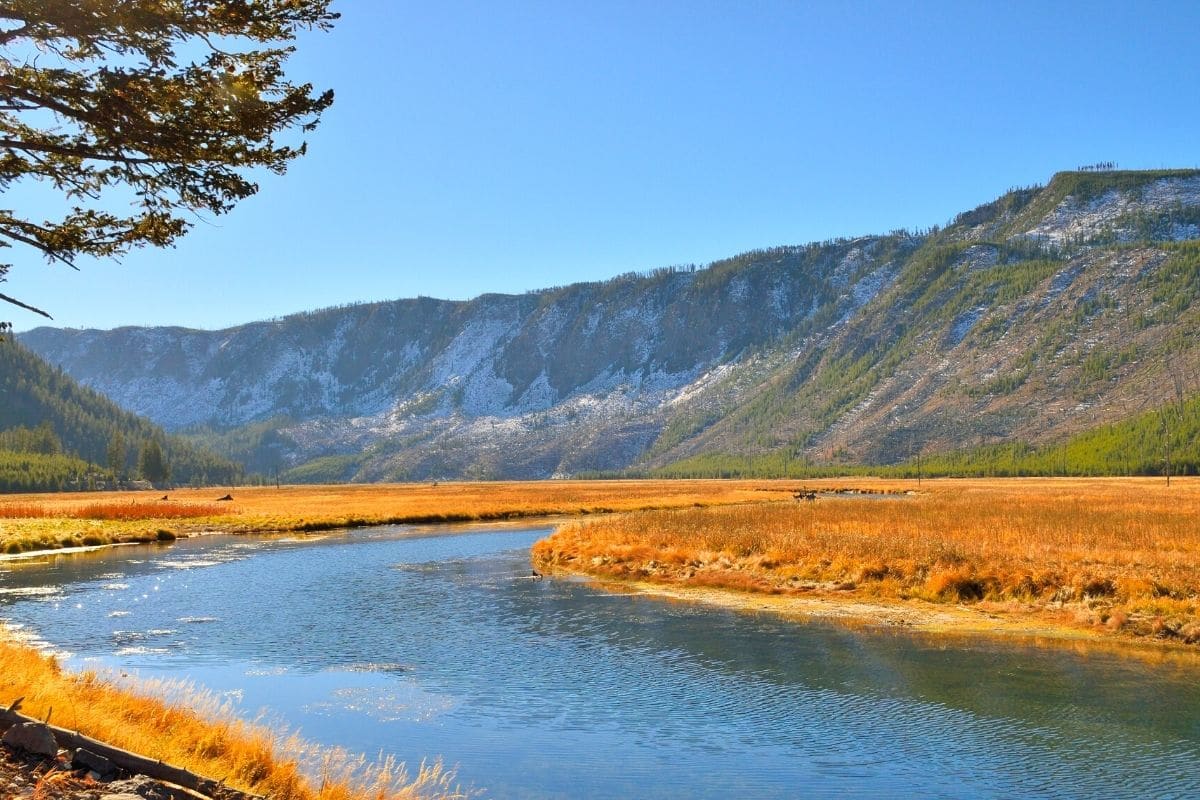Finding the World of Crawfish: Nature’s Tiny Lobsters
Crawfish are freshwater crustaceans closely related to lobsters, featuring a hard exoskeleton, jointed legs, and distinctive front claws. They typically grow to around 6.9 inches (17.5 cm) in length and are found in freshwater environments worldwide.
Quick Crawfish Facts:
- Scientific classification: Belong to the infraorder Astacidea
- Regional names: Also called crayfish, crawdads, or mudbugs depending on region
- Main producing region: Louisiana (100 million pounds annually, 93% of US farms)
- Primary species: Red swamp crawfish (Procambarus clarkii) and white river crawfish (Procambarus zonangulus)
- Peak season: Generally April through May in the Southern United States
- Culinary use: Popular in Cajun cuisine, Swedish kräftskiva celebrations, and Asian dishes
Whether you’re planning to attend your first crawfish boil, curious about these fascinating crustaceans, or looking to source them for a special meal, these remarkable creatures have both ecological importance and culinary significance that spans cultures worldwide.
The distinctive red shells, sweet tail meat, and the communal experience of a traditional crawfish boil represent more than just a meal—they’re a cultural tradition that brings people together. As one Louisiana native shared in our research, “It’s not just about the food; it’s about gathering around a newspaper-covered table, rolling up your sleeves, and sharing stories while you work for your meal.”
From their fascinating biology to their place on dinner tables across the globe, crawfish have earned their reputation as one of the most beloved freshwater delicacies, with consumption and farming practices that vary dramatically across different regions and cultures.

Basic crawfish glossary:
Crawfish 101: Biology & Identification
Ever wondered what makes a crawfish tick? These fascinating freshwater crustaceans belong to the order Decapoda and infraorder Astacidea—fancy scientific terms that simply mean they’re cousins to lobsters and crabs. While they might look like miniature lobsters that took a wrong turn at the ocean, crawfish have carved out their own special niche in freshwater environments worldwide, with over 330 species calling southeastern North America home.
Take a closer look at a crawfish, and you’ll notice two main body sections: the cephalothorax (where the head and chest fuse under a protective shield) and the abdomen (that tasty tail everyone fights over at boils). Their most eye-catching feature? Those impressive front claws, or chelipeds, which they use for everything from defending territory to finding dinner to showing other crawfish who’s boss.
Size-wise, your average crawfish grows to about 6.9 inches in length, but there are some remarkable exceptions. The Tasmanian giant freshwater crayfish makes our Louisiana varieties look like babies—these monsters can tip the scales at 11 pounds! That’s like comparing a house cat to a mountain lion.
Common Names: Crawfish, Crayfish, Crawdad, Mudbug
What you call these little critters probably reveals where you grew up. According to the Harvard Dialect Survey, southerners (especially Louisianans) tend to say “crawfish,” while folks up north and out west prefer “crayfish.” Midwesterners and people from Appalachia might call them “crawdads,” and if you hear someone say “mudbug,” you’re probably talking to a true Louisianan.
These names have fascinating origins. The Oxford English Dictionary traces “crayfish” back to Old French “escrevisse,” while “crawfish” and “crawdad” represent American English evolving in its own direction. “Mudbug” is perhaps my favorite—a colorful nickname that perfectly describes their habit of burrowing into muddy creek bottoms.
During our culinary explorations for The Dining Destination, we’ve noticed these regional terms often signal authentic local cuisine. When a Louisiana menu advertises a “mudbug boil,” you know you’re about to experience the real deal!
Anatomy Snapshot

The crawfish wears its skeleton on the outside—an exoskeleton made primarily of chitin and calcium compounds that serves as both armor and structural support. This rigid covering means they can’t grow continuously like we do. Instead, they must molt their entire shell periodically, leaving them temporarily vulnerable until their new armor hardens.
A crawfish is a marvel of specialized parts working together. Their large front claws (chelipeds) get all the attention, but equally important are their four pairs of walking legs, the small swimmerets under their tail (which females use to carry eggs), and sensitive antennae that help them steer their underwater world. The hard shield covering their upper body (carapace) protects vital organs like the heart and gills.
When danger approaches, a crawfish can activate its built-in escape plan: the distinctive tail fan at the rear (made up of the central telson and side uropods) functions like an underwater jet, propelling them backward with surprising speed. It’s not graceful, but it works—and in crawfish, survival trumps style every time.
Global Habitat & Main Species Distribution
These fascinating freshwater crustaceans have conquered almost every corner of our planet! Crawfish can be found thriving on every continent except Antarctica, showcasing their incredible adaptability to different environments and conditions.
North America stands as the true crawfish diversity hotspot, home to more than 330 different species. But the real commercial heavyweights are two particular varieties: the Procambarus clarkii (red swamp crawfish) and Procambarus zonangulus (white river crawfish). These two species form the backbone of Louisiana’s famous crawfish industry, with the red swamp variety making up about 70-80% of production and the white river accounting for the remaining 20-30%.
Down under in Australia, locals enjoy their own native species affectionately called “yabbies,” while Europe’s indigenous white-clawed crawfish faces an uphill battle against introduced species threatening their habitats. Perhaps the most surprising twist in the global crawfish story is Asia’s relatively recent rise to dominance. As of 2018, Asian production (with China leading the charge) accounted for a staggering 95% of the world’s crawfish supply – talk about cornering the market!
| Characteristic | Red Swamp Crawfish | White River Crawfish |
|---|---|---|
| Scientific name | Procambarus clarkii | Procambarus zonangulus |
| Color | Dark red to nearly black | Lighter tan to beige |
| Preferred habitat | Swamps, ditches, slow-moving water | Clearer water, rivers, bayous |
| Growth rate | Faster | Slower |
| Tolerance to poor water quality | Higher | Lower |
| Percentage of Louisiana production | 70-80% | 20-30% |
| Flavor profile | More robust, mineral notes | Milder, slightly sweeter |
Hotspots & Aquatic Niches
If crawfish could talk, they’d probably rave about Louisiana’s wetlands as prime real estate. These shallow, nutrient-rich waters with plenty of vegetation offer the perfect combination of food sources and hiding spots from predators. It’s like the crawfish equivalent of a luxury neighborhood!
Rice paddies represent another crawfish paradise, especially in Louisiana where farmers have cleverly developed rice-crawfish rotation systems. This brilliant approach maximizes land use while providing ecological benefits – a win-win for farmers and our little crustacean friends. During my visits to these areas for The Dining Destination, I’ve been amazed at how this traditional farming technique creates such a harmonious relationship between agriculture and aquaculture.
Beyond these managed environments, crawfish are remarkably adaptable. Many species are accomplished diggers, creating elaborate tunnel systems in stream banks or wetland soils. These burrows serve as both drought shelters and nurseries for baby crawfish, allowing populations to survive even when surface water disappears. Some species have even adapted to brackish estuaries, showcasing their impressive evolutionary flexibility.
Invasive Crawfish Impacts
Unfortunately, the same adaptability that makes crawfish successful in their native habitats can create serious problems when they’re introduced to new ecosystems. The rusty crayfish, native to the Ohio River basin, has become a troublemaker in the northern United States and Canada after being carelessly released by anglers who used them as bait.
Similarly, the signal crayfish from North America has established unwelcome populations throughout Europe, outcompeting native species and reshaping entire aquatic ecosystems. These invasive crawfish often carry the crayfish plague pathogen, which is deadly to European native species but causes little harm to their North American cousins who have developed resistance over time.
The ecological ripple effects go far beyond just competing with native species. As enthusiastic omnivores and efficient burrowers, invasive crawfish can dramatically alter aquatic vegetation, muddy clear waters, damage riverbanks, and disrupt food webs by consuming everything from tiny algae to small fish and amphibians.
According to the U.S. Geological Survey, once these invasive populations establish themselves, they’re nearly impossible to remove without causing further ecological damage. This is why prevention through education about responsible bait use and proper aquarium disposal remains our best defense against these unintentional invasions.
Life Cycle, Diet & Ecological Role
There’s something magical about watching the crawfish life cycle unfold. It all begins during the cooler months of autumn or early winter, when water temperatures drop and romance blooms in the underwater world. After mating, female crawfish become nature’s patient carriers – storing sperm until spring conditions are just right for egg-laying.
Once she’s ready, a female fertilizes her eggs and carries them tucked safely beneath her tail, attached to specialized swimmerets. This creates what’s commonly called a “berried” female, since the clusters of tiny eggs resemble little berries. It’s quite a sight to behold! Depending on her size and species, she might nurture anywhere from 100 to 700 eggs in this protective accept.
After several weeks of careful tending, tiny juvenile crawfish emerge, looking like perfect miniature versions of their parents. These little ones stay attached to mom’s swimmerets through their first few vulnerable molts, gradually gaining independence as they grow.

Growing up isn’t easy when you wear your skeleton on the outside! Young crawfish will molt 6-10 times during their first year alone. This molting process – shedding the old exoskeleton to allow for growth – represents both opportunity and danger. For a brief window after molting, a crawfish’s new shell remains soft and pliable, leaving them particularly vulnerable to predators until it hardens.
In the grand ecological mix, crawfish serve as nature’s recyclers. These industrious little creatures break down organic matter, circulate nutrients, and create vital connections in freshwater food webs as both predators and prey. Scientists have even recognized their value as “sentinel species” – their sensitivity to environmental changes makes them excellent bioindicators for monitoring water quality and ecosystem health.
Crawfish Behavior & Hierarchies
Crawfish social life rivals any high school drama – complete with posturing, confrontations, and established pecking orders. When two crawfish meet, they typically begin with a gentle antenna-touching greeting that’s essentially their way of sizing each other up. If tensions rise, the interaction can escalate to an impressive intimidation display, with both standing tall on their walking legs, claws extended forward like tiny gladiators.
While physical showdowns do occur, they rarely result in serious injury. Once dominance is established, the loser typically retreats, accepting their place in the hierarchy. What’s fascinating is that these crustaceans display individual personalities – some consistently show more aggression than others, regardless of size advantage.
Shelter becomes a particularly hot commodity in the crawfish world, especially during vulnerable molting periods. In captivity, providing multiple hiding places significantly reduces stress and aggression – a simple practice that improves outcomes in both commercial farming and home aquariums. It’s a reminder that even these small creatures have complex social needs that influence their well-being.
What Do Crawfish Eat?
The dining habits of crawfish reflect their impressive adaptability. These underwater omnivores aren’t picky eaters, which partly explains their success across diverse habitats worldwide.
In the wild, crawfish primarily feast on aquatic vegetation, algae, and decaying organic matter. They’ll happily supplement this plant-based diet with small invertebrates like insect larvae, worms, and snails when available. Their willingness to consume carrion – dead fish and other animal matter – makes them nature’s clean-up crew, helping to maintain healthy aquatic ecosystems.
Some adventurous species even make brief excursions onto land to graze on biofilms growing on rocks and vegetation – a true display of their evolutionary flexibility. In commercial farming operations, crawfish typically receive specialized pellet food, though many farms wisely leverage natural pond productivity supplemented with vegetation like rice straw.
Perhaps most fascinating is their waste-not approach to nutrition. Crawfish practice coprophagy – the consumption of their own waste, which comes wrapped in a special membrane allowing them to extract additional nutrients. This resourceful adaptation helps them thrive even in nutrient-limited environments. They’ll even recycle their own shed exoskeletons after molting, efficiently reclaiming valuable calcium and minerals needed for hardening their new shells.
This remarkable dietary flexibility isn’t just interesting biology – it’s part of what makes crawfish such successful creatures across vastly different environments, from Louisiana swamps to Chinese rice paddies and Australian billabongs.
From Pond to Plate: Harvesting, Farming & Culinary Traditions
Down in Louisiana, the heart of American crawfish country, farmers bring in a staggering 100 million pounds of these freshwater crustaceans every year. It’s no small operation – this single state houses 93% of all U.S. crawfish farms. What makes their approach so clever is the rice-crawfish rotation system many farmers have adopted. The same plot of land grows rice during summer months, then transforms into a crawfish haven during winter and spring – a perfect example of agricultural ingenuity at work.
Harvesting these little critters follows time-honored traditions. Baited traps get placed strategically throughout ponds or natural waterways, with farmers checking them daily when the season peaks. In commercial operations, crawfish are carefully graded by size – the bigger ones often fetching higher prices at market. What began as simple backyard ponds has evolved into sophisticated operations with precise water management and feeding schedules.
While Louisiana proudly maintains its status as America’s crawfish capital, China has emerged as the surprising global powerhouse in production. There’s a touch of irony here – Chinese farms primarily raise red swamp crawfish (Procambarus clarkii), a species native to the southeastern United States that found its way to China in the early 1900s. Since then, Chinese farmers have developed extensive pond systems that have completely transformed global production.

Recent years have seen growing attention to humane handling practices. Rather than dropping live crawfish directly into boiling water, research suggests freezing them first or cutting along the abdomen to disable the central nervous system represents a more compassionate approach.
The cooking fundamentals remain remarkably consistent across cultures. Whether you’re in Louisiana or Sweden, crawfish typically meet their destiny in a well-seasoned boil or steam bath. The iconic Cajun boil – a true feast for the senses – combines crawfish with corn on the cob, potatoes, chunks of sausage, and a magical blend of spices typically featuring cayenne, paprika, garlic, and bay leaves. If you’re looking to host your own authentic boil, you’ll find detailed step-by-step guidance on how to boil crawfish.
Crawfish in Cajun & Global Cuisine
In Cajun country, crawfish aren’t just food – they’re part of the cultural fabric. Take crawfish étouffée, for instance – this rich, roux-based stew served over fluffy rice represents perhaps the most sophisticated expression of crawfish in Louisiana cooking. Equally beloved (though considerably more labor-intensive) is crawfish bisque, traditionally made by stuffing crawfish heads with a spiced mixture of crawfish meat and aromatic vegetables.
When crawfish season hits Louisiana, it transforms into a genuine social phenomenon. Weekend boils bring extended families and entire neighborhoods together around newspaper-covered tables, peeling tails and sucking heads (yes, that’s where the flavor is!). The state’s devotion to these crustaceans runs so deep that in 1983, Louisiana officially designated the crawfish as its state crustacean.
Across the Atlantic, Swedes celebrate crawfish with similar enthusiasm during their late-summer kräftskiva (crayfish party), a tradition dating back to the 16th century. These joyful gatherings feature specially prepared crawfish served cold with plenty of dill, accompanied by schnapps, singing, and colorful paper lanterns illuminating the night.
In Asia, particularly Singapore and China, crawfish star in fiery preparations like Singapore chilli crayfish – a cousin to the famous chilli crab that locals adore. Chinese chefs showcase crawfish in mala-flavored dishes that combine the unique numbing sensation of Sichuan peppercorns with intense chili heat – a combination that’s become wildly popular across the country.
For food triprs eager to experience these authentic regional traditions firsthand, our guide to Regional Food Festivals highlights celebrations where these dishes take center stage throughout the year.
Best Practices for Buying & Cooking Live Crawfish
Choosing quality live crawfish isn’t complicated once you know what to look for. First, seek active specimens with curved tails – straight tails often indicate they were dead before cooking, which can affect both flavor and food safety. Size matters too; larger crawfish yield more meat per shell, though some passionate eaters insist that smaller ones deliver a sweeter flavor.
Proper storage makes all the difference in maintaining freshness. Keep live crawfish at temperatures between 36-46°F (2-8°C) – cool enough to slow their metabolism without killing them. Never store them in water, where they’ll quickly use up available oxygen and suffocate. Instead, keep them in their original mesh sacks or in coolers with damp towels to maintain the right humidity level.
Before they hit the pot, a good cleaning removes mud, debris, and potential contaminants. While true purging (completely clearing the digestive tract) requires extended soaking in salt water, a thorough rinse with fresh water removes surface dirt and works perfectly for most home cooks. For a deeper dive into preparation, detailed instructions on how to clean crawfish can guide you through the process step by step.
When it comes to seasoning, traditional Cajun boils typically use about one pound of commercial seafood boil mix per 10-15 pounds of crawfish. These aromatic blends generally contain mustard seed, coriander, cayenne, bay leaves, dill seed, and allspice, though recipes vary widely between commercial brands and family traditions handed down through generations.
From a sustainability perspective, we recommend purchasing from local sources whenever possible. This approach reduces carbon footprint and supports regional economies that depend on crawfish harvesting. When buying imported crawfish, look for certifications that indicate responsible farming practices to ensure you’re making environmentally conscious choices.
Sustainability, Threats & Smart Buying
Our beloved crawfish face a surprising number of challenges in today’s changing world. Despite their tough exteriors and adaptable nature, these freshwater crustaceans aren’t immune to environmental pressures. Wild populations are increasingly squeezed by vanishing wetlands, as urban sprawl and agricultural expansion drain the soggy habitats they’ve called home for millennia. Climate change adds another layer of complexity, disrupting the delicate seasonal rhythms that trigger crawfish to mate, molt, and migrate.
In Europe, the situation is particularly concerning. Native species face a double threat—overharvesting from commercial collection and fierce competition from non-native species that often bring disease along with them. The crayfish plague, caused by Aphanomyces astaci, has been especially devastating, wiping out entire populations of European crawfish while North American species (often the unwitting carriers) remain resistant.

Not all crawfish farming is created equal when it comes to environmental impact. Some intensive operations create problems through nutrient pollution and habitat conversion. But there’s good news too—Louisiana’s ingenious rice-crawfish rotation systems represent a brilliant approach to sustainability. These farms use the same land to grow rice during summer months and raise crawfish in winter and spring, reducing the need for chemicals while making efficient use of the land. It’s a win-win that other regions are beginning to adopt.
For shoppers concerned about making responsible choices, the seafood landscape can be confusing. While certification programs exist for many seafood types, specific crawfish certifications remain somewhat limited. Price-wise, expect seasonal fluctuations, with the best deals appearing during peak season (April-May in Louisiana). Interestingly, global demand—especially from China’s booming crawfish market—has created unexpected ripples in traditional markets, sometimes leading to higher prices or limited availability in regions where crawfish were once abundant and affordable.
Ensuring Quality & Sustainability When You Shop
Finding the freshest, most responsibly sourced crawfish doesn’t have to be complicated. Start by thinking local—farmers’ markets, regional seafood shops, and direct farm purchases often yield the most delicious results while supporting community businesses. I’ve found that chatting with local vendors not only guarantees fresher product but often comes with free cooking advice from people who know crawfish best!
Timing matters tremendously when buying crawfish. In the United States, late winter through spring delivers peak quality, with April and May offering the sweet spot for size, flavor, and value. During off-season months, frozen tail meat can pinch-hit in recipes, though it lacks the full experience and flavor complexity of fresh, whole crawfish. As one Louisiana chef told me, “Frozen tails are fine for a Tuesday night étouffée, but for a proper boil, you need the real deal.”
If you’re ordering live crawfish for delivery (an increasingly popular option during the pandemic), look for companies offering live delivery guarantees and transparent policies about dead loss. Reputable suppliers will replace or refund when mortality exceeds 5-10% upon arrival—a reasonable standard in the industry. Before ordering, check how they ship and how quickly the product will arrive, as crawfish quality deteriorates rapidly after harvesting.
When dining out, don’t be shy about asking where a restaurant’s crawfish come from. Establishments committed to quality and sustainability are usually proud to share their sourcing practices. Some may even highlight seasonal availability or special relationships with local producers. For more guidance on finding authentic local food experiences while traveling, our guide on How to Find Authentic Local Eats in Any City offers practical tips for culinary explorers.
Frequently Asked Questions about Crawfish
How are crawfish classified biologically?
Crawfish are fascinating creatures from a biological standpoint. They belong to the phylum Arthropoda (those crunchy-on-the-outside animals), class Crustacea (think aquatic arthropods), order Decapoda (the “ten-footed” crowd), and infraorder Astacidea—which they share with their ocean-dwelling cousins, lobsters.
Within the Astacidea family tree, crawfish branch into three distinct superfamilies: Astacoidea (the Northern Hemisphere bunch), Parastacoidea (their Southern Hemisphere relatives), and Enoplometopoidea (reef lobsters that stayed in the ocean while crawfish ventured into freshwater).
This scientific organization isn’t just about giving them fancy names—it reflects their evolutionary journey based on physical characteristics and genetic makeup. When scientists talk about crawfish being “decapods,” they’re referring to their ten legs, including those impressive front claws that anyone who’s attended a crawfish boil knows all too well.
The crawfish world is surprisingly diverse, with scientists having documented more than 600 species globally—and they’re still finding new ones! North America is a particular hotspot, boasting over 330 species across 15 genera, with the southeastern United States serving as a veritable crawfish paradise.
What’s the difference between red swamp and white river crawfish?
If you’ve ever wondered why some crawfish look different from others at your local boil, you’re likely noticing the distinction between the two commercial heavyweights: red swamp crawfish (Procambarus clarkii) and white river crawfish (Procambarus zonangulus).
The red swamp variety sports a darker coloration ranging from deep red to nearly black, while their white river cousins display a lighter tan to beige appearance—a difference that becomes even more pronounced after cooking. These color variations aren’t just cosmetic; they reflect deeper adaptations to different environments.
Red swamp crawfish are the tough, adaptable workhorses of the industry, thriving in swamps, ditches, and slow-moving waters where oxygen might be limited. They grow faster, tolerate poor water conditions better, and dominate the market—making up 70-80% of Louisiana’s impressive harvest.
White river crawfish, meanwhile, prefer the cleaner, flowing waters of rivers and bayous. They’re a bit more delicate, growing somewhat slower than their red counterparts.
Even their flavors differ slightly, with culinary experts noting that red swamp crawfish deliver a more robust, mineral-rich taste, while white river varieties offer a milder, slightly sweeter flavor profile. Both are delicious, but these subtle differences make each species suited to particular dishes and preparation methods.
Do crawfish feel pain when boiled?
The question of whether crawfish feel pain—particularly during the traditional boiling process—touches on both science and ethics, and it’s a conversation that’s evolving as our understanding grows.
While crawfish do have nociceptors (sensors that detect potentially harmful stimuli), their nervous systems are quite different from ours. They lack a centralized brain like humans have, instead operating with a more distributed nervous system. However, recent studies suggest that crustaceans may indeed experience something comparable to pain, prompting many chefs and home cooks to adopt more humane cooking practices.
If you’re looking to prepare crawfish more humanely, consider these approaches:
Chill your crawfish in ice water or freeze them for about 30 minutes before cooking. This induces a torpor-like state that minimizes potential suffering.
Some chefs recommend splitting the crawfish along the midline before cooking, which quickly destroys the central nervous system.
In Switzerland and parts of Europe, regulations now prohibit boiling crustaceans alive without first stunning or killing them. While similar rules haven’t been widely adopted in the U.S., many restaurants and home cooks are voluntarily embracing these more compassionate methods.
As one Louisiana chef told us during our research, “The way we prepare our food reflects our values. Taking an extra minute to ensure humane treatment doesn’t change the flavor—if anything, it improves the entire experience by bringing mindfulness to the table.”
The debate touches on deeply held cultural traditions, practical cooking considerations, and evolving understandings of animal consciousness—making it a perfect example of how food connects to broader ethical questions in our society.
Conclusion
After diving deep into crawfish, it’s clear these freshwater crustaceans are far more fascinating than their humble appearance might suggest. From the murky bayous of Louisiana to the festive tables of Swedish kräftskiva celebrations, crawfish have woven themselves into the cultural and culinary fabric of communities worldwide.
What have we learned on our journey through crawfish territory? These remarkable creatures showcase incredible biological diversity, with over 600 species adapting to freshwater environments across the globe. Their ecological importance can’t be overstated—they’re nature’s recyclers, breaking down plant matter and serving as a crucial link in aquatic food webs.
The culinary landscape of crawfish is equally rich. Louisiana proudly leads American production with an impressive 100 million pounds annually, while China has emerged as the surprising global powerhouse in crawfish farming. Each region brings its own traditions to the table—whether it’s the newspaper-covered communal tables of a spicy Cajun boil or the dill-infused delicacies of Swedish summer celebrations.
But our relationship with these creatures isn’t without challenges. Crawfish face threats from habitat loss as wetlands disappear, while invasive species disrupt native populations and disease pressures mount. As consumers, our choices matter more than ever. Selecting sustainably harvested or farmed crawfish helps ensure these traditions continue for generations to come.
Quality matters—proper selection, storage, and preparation make all the difference between a mediocre meal and a memorable feast. The difference between straight-tailed and curved-tail crawfish isn’t just culinary trivia—it’s essential knowledge for getting the most from your seafood investment.
At The Dining Destination, we believe food is more than sustenance—it’s a gateway to understanding culture, ecology, and community. Crawfish embody this philosophy perfectly. Few dining experiences bring people together quite like a crawfish boil, where conversation flows as freely as the seasoned water and where getting messy is part of the fun.
We encourage you to seek out authentic crawfish experiences in your travels, support sustainable harvesting practices, and perhaps even host your own boil to share this unique culinary tradition with friends and family. For more insights on making environmentally conscious dining choices, explore our guide to sustainable dining practices.
Whether you’re a longtime crawfish enthusiast or just beginning to explore these fascinating crustaceans, we hope this Essential Guide to Crawfish has deepened your appreciation and inspired your next food trip. After all, the best culinary experiences aren’t just about the food—they’re about the stories, traditions, and connections we make around the table.







